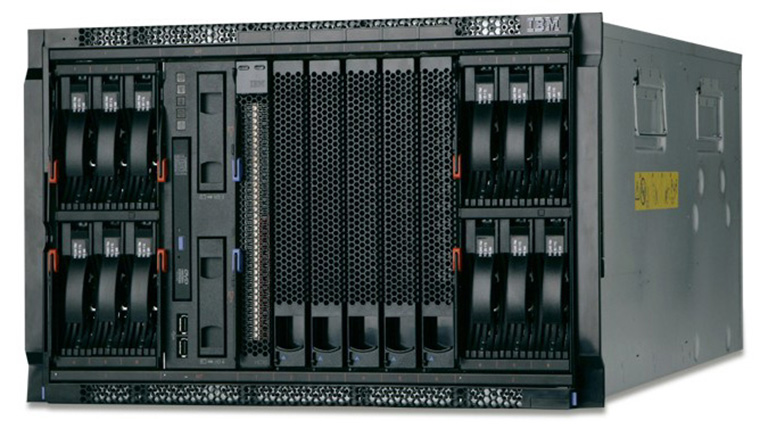Time to time is necessary upgrade or change Server Hardware. In average, companies change hardware for servers every 3-5 years. Furthermore, yes, this time we could get problems with doing that. Move Installed Windows to the same the physical computer is not a big deal, but move Installed Windows to different physical computer sometimes is not so easy. Let see how to do this by using standard NTBACKUP.
In this article I’ll show you how to create a system state backup on one computer and restore it to a different physical computer.
Before I start, let make sure that we are speaking the same language.
I’m going to mention words like “Source Computer” and “Destination Computer“.
The source computer is defined as the OLD computer. On this computer you create the system state backup. The destination computer is the new computer where you will move our Installed Windows.
Of the highest importance thing should be remembered. To make our life easy, the source and destination computers must use the same type of Hardware Abstraction Layer (HAL), otherwise you will fight with changing the HAL, but it’s already other story :). In this article we will deal with servers that have same HAL. Just for your knowledge, to figure out the computer HAL type that you are using on each computer, follow these steps:
- Click Start, point to Settings, click Control Panel, and then click System.
- On the Hardware tab, click Device Manager, and then expand the Computer branch.
- ACPI multiprocessor computer = Halmacpi. dll
- ACPI uniprocessor computer = Halaacpi. dll
- Advanced Configuration and Power Interface (ACPI) computer = Halacpi. dll
- MPS multiprocessor computer = Halmps. dll
- MPS uniprocessor computer Halapic. dll standard computer = Hal. dll
- Compaq SystemPro multiprocessor or 100% compatible = Halsp. dll
The first step is creating a Full System Backup of Source Computer. Use Windows Backup to back up the system drive, the system drive subfolders, and the system state. Before doing a backup, on the source computer, log on by using the Administrator account, and then stop all non-critical services and services that you typically stop before you perform a backup. This may include any service that puts locks on files. This includes antivirus, disk scanning, and indexing services. Verify that the TCP/IP start value is set to 1. This value is located in the following registry subkey:
HKEY_LOCAL_MACHINE\SYSTEM\CurrentControlSet\Services\Tcpip Value NameStart Value TypeREG_DWORD Value Data1
The second part is to install Operating System on the Destination Computer. The source and destination computers must use identical operating system versions. For example, you cannot run Windows 2000 Advanced Server on destination computers if on the source computer was Microsoft Windows 2000 Server. The best practice is to install Windows on the destination computer by using the same installation media that used to install the source computer. Additionally, the destination computer must use the same logical drive letter (%systemdrive%) and path (%systemroot%) as the source computer. Also, on to the destination computer, by using Disk Management, create, format, and assign drive letters to any additional volumes that may be required to hold a system state component. Make sure that all drive letters match those of the source computer. Disk space for volumes on the destination computer should be as least as large as corresponding volumes on the source. For domain controllers, the locations of the Active Directory directory service database, Active Directory log files, FRS database, and FRS log files must also be identical for the source and destination computers. For example, if the Active Directory database log files on the source computer were installed on C:\WINNT\NTDS, the destination computer must also use the C:\WINNT\NTDS path.
If the Source server is Windows 2000 computers, Hotfix 810161 or Windows 2000 Service Pack 4 must be installed. These items must also be installed on the destination computer before you restore the backup. Windows Server 2003 and Windows XP do not have any hotfix or service pack level requirements for this kind of restore operation. If the source computer runs Windows 2003 SP1 please install Windows 2003 SP1 on the destination computer as well. If you do not do this, you will get the error noted below:
Error message when you restore a Windows Server 2003 Service Pack 1-based backup on a Windows Server 2003-based computer: Windows could not start because an error in the software.
Now, on the destination, please create C:\Backup folder. Put a copy of the C:\Boot.ini file and the whole %systemroot%\Repair folder, including all of its subfolders, in the C:\Backup folder.
So far, so good, we can start to restore processes on our destination server (Our new, just fresh installed Server). So, to restore the backup on the destination computer, follow these steps:
- Click Start, click Run, type ntbackup, and then click OK.
- On the Tools menu, click Options, click the Restore tab, and then click Always replace the file on my computer.
- Restore the system state from the backup that you performed on source computer. Make sure that you select the option to restore to the original location.
After the restore operation is completed, DO NOT RESTART, instead, just follow these steps:
- Copy the Boot.ini file from the C:\Backup folder that you created in step 6. Copy the Repair folder and its subfolders from the C:\Backup folder to the %systemroot%\Repair folder.
- Reinstall the destination computer’s hard disk controller drivers.
- Verify that the source computer is turned off, disconnected from the network, or has been reinstalled by using a different computer name and IP address.
- Restart the new computer, and then verify that it is functioning correctly. Install / Update necessary hardware drivers.
I’ve tested this solution several times on Microsoft Windows Server 2003, Microsoft Windows Server 2000 and Microsoft Windows XP Professional and always this solution worked for me! I hope this article will help you as well :).

No responses yet